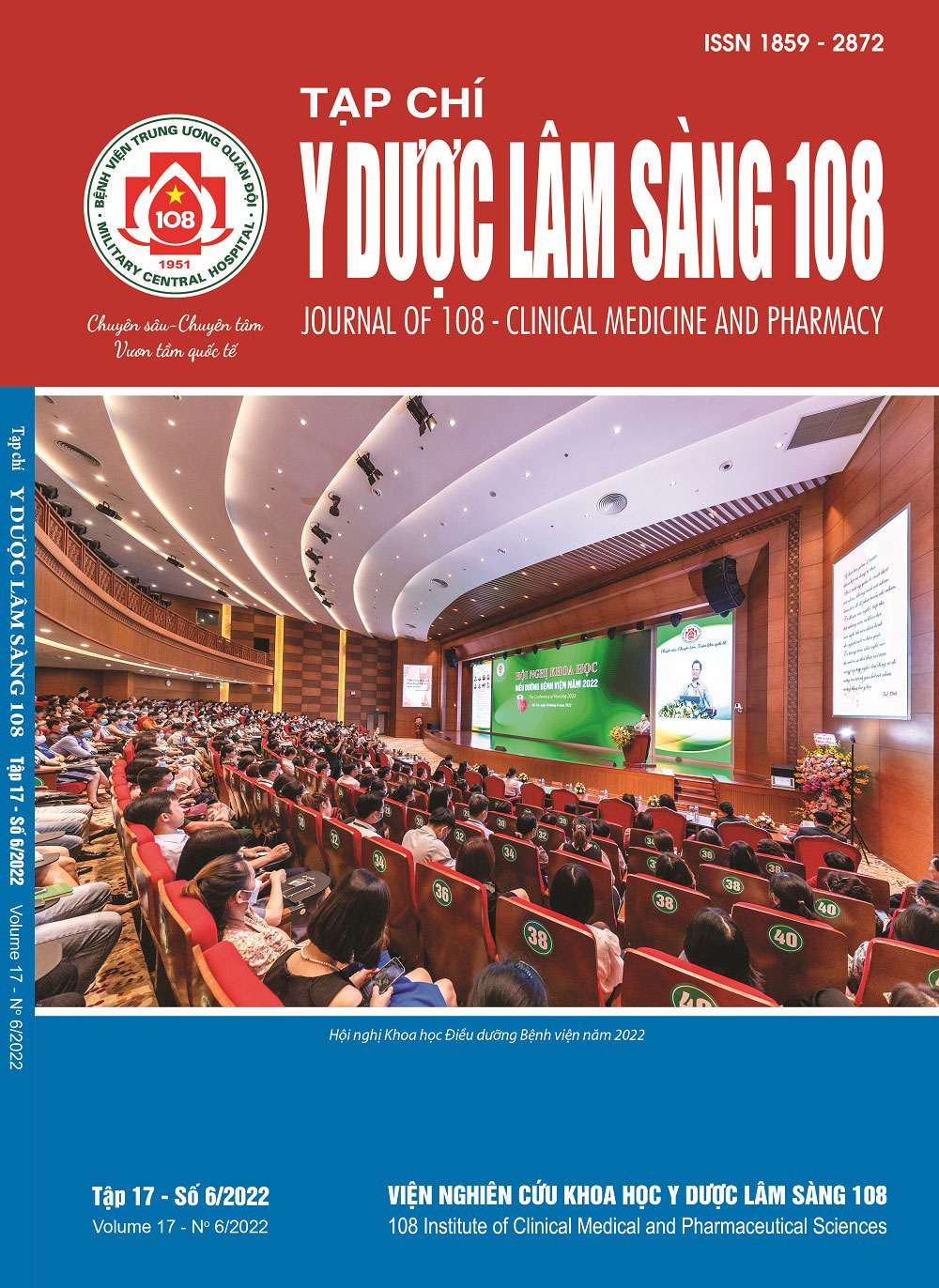Technical of vascular reconstruction in right lobe graft living donor liver transplantation
Main Article Content
Keywords
Abstract
Objective: To evaluate the technical characteristics of vascular reconstruction in right lobe graft living donor liver transplantation. Subject and method: The prospective study was performed on 52 cases of living donor liver transplantation using right lobe graft at 108 Military Central Hospital from January 2019 to December 2020. Result: There were 42 cases of using the extended lobe living donor liver transplant including the middle hepatic vein (80.7%) and 10 cases of the modified right lobe graft with the middle hepatic vein reconstructed from the V5 and/or V8 branches (19.3%) by using polytetrafluoroethylene artificial vessels. We conjoined the MHV and RHV as a single orifice hepatic vein. The hepatic veins were enlarged to the left and downwards at the orifice of the recipient's right hepatic vein, with a mean incision length of 14mm and 9.7mm, respectively. A total of 15 accessory right inferior hepatic veins with diameter > 5mm were anastomosed directly to inferior vena cava (IVC) in an end-to-side fashion in recipient (28.8%). 100% of the portal vein anatomical anastomosis were performed in an end-to-end fashion using continuous sutures. The thrombectomy was performed in 4 cases of PVT grade I and II. Two cases were performed simultaneous splenectomy during LDLT, and five cases underwent portosystemic collaterals ligation. 100% of the hepatic arteries anatomical reconstructions were performed under surgical loupes of magnification 3.5X in an end-to-end fashion with parachute technique using continuous 8-0 Prolene sutures. A total of 2 cases with mild intimal dissection need to cut back the dissected artery to get a healthy undissected stump (3.8%) and 2 cases need to use the other undissected HA (3.8%). Conclusion: The single orifice hepatic vein reconstruction in LDLT using a right lobe graft is a feasible surgical technique. It is necessary to assess the anatomical variation, non-tumoral thrombosis of the portal vein and the intimal dissection of hepatic artery before transplantation to select the most appropriate reconstruction method.
Article Details
References
2. Li PC, Thorat A, Jeng LB et al (2017) Hepatic artery reconstruction in living donor liver transplantation using surgical loupes: Achieving low rate of hepatic arterial thrombosis in 741 consecutive recipients-tips and tricks to overcome the poor hepatic arterial flow. Liver Transpl 23(7): 887-898.
3. Lee SG (2006) Techniques of reconstruction of hepatic veins in living-donor liver transplantation, especially for right hepatic vein and major short hepatic veins of right-lobe graft. J Hepatobiliary Pancreat Surg 13: 131-138.
4. Kim JD, Choi DL, Han YS et al (2014) Simplified one-orifice venoplasty for middle hepatic vein reconstruction in adult living donor liver transplantation using right lobe grafts. Clin Transplant 28: 561-568.
5. Hwang S, Lee SG, Ahn CS et al (2005) Cryopreserved iliac artery is indispensable interposition graft material for middle hepatic vein reconstruction of right liver grafts. Liver Transplantation 11(6).
6. Hwang S, Lee SG, Ahn CS et al (2009) Technique and outcome of autologous portal Y-graft interposition for anomalous right portal veins in living donor liver transplantation. Liver Transplantation 15: 427-434.
7. Miura K, Sugawara Y, Uchida K et al (2018) Adult living donor liver transplantation for patients with portal vein thrombosis: A single-center experience. Transplantation Direct 4(5): 341.
8. Yoshizumi T, Mori M (2020) Portal flow modulation in living donor liver transplantation: Review with a focus on splenectomy. Surg Today 50(1): 21-29.
9. Agarwal S, Dey R, Pandey Y et al (2020) Managing recipient hepatic artery intimal dissection during living donor liver transplantation. Liver Transpl 26(11): 1422-1429.
10. Lin TS, Chiang YC (2000) Combined microvascular anastomosis: Experimental and clinical experience. Ann Plast Surg 45: 280-283.
 ISSN: 1859 - 2872
ISSN: 1859 - 2872
